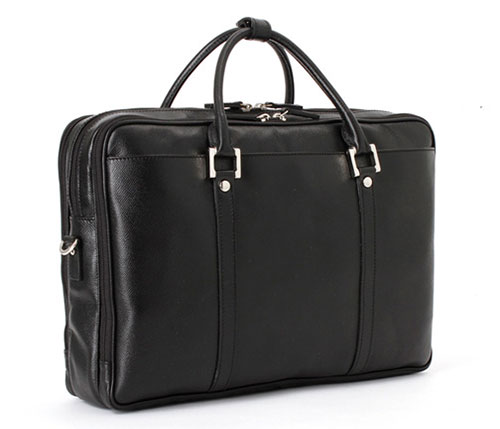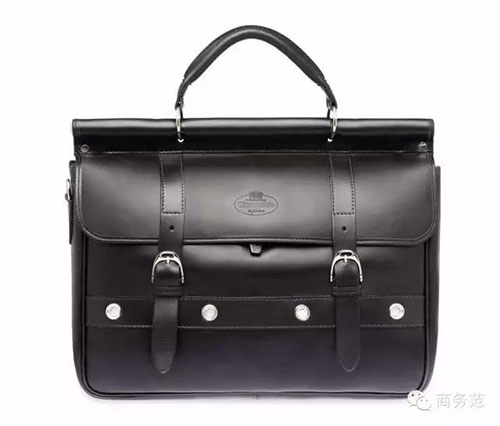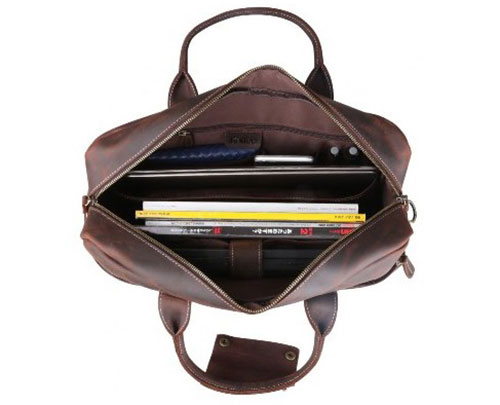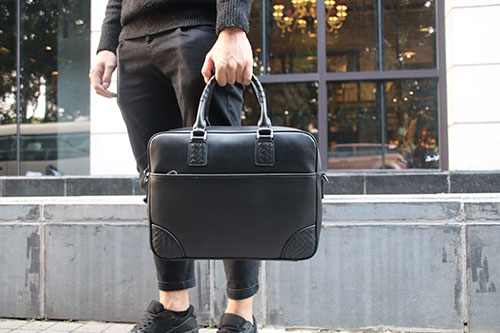Nowadays, office workers take many files everywhere, it is high requesting for briefcase. Practicality and fashion also go hand in hand. In the market, there are many briefcases, and cause problems: how to choose briefcase?
Here are 8 tips for choosing briefcase:
- The leather quality
Quality leather improves with age – the briefcase should look fantastic even after a decade of use. Over time, leather changes color and develops an attractive patina.
Full-grain leather makes the most durable briefcases.
Top-grain leather is an affordable and excellent alternative to full-grain leather.
For a more water-permeable and thinner leather, choose split-grain leather. It won’t last as long as higher-quality versions.
The origins of the leather used to make the briefcase often determines the quality. The finest quality leather is sourced from Italy, France, England, and America.

- The hardware materials quality
The hardware materials used for the briefcase affect not only the price but its durability and appearance.
The locks, handle, shoulder strap fittings, zippers, buckles and metallic rings take the most abuse on a daily basis and are likely to wear out the quickest.
Check that the materials are of good quality. In store – this is a simple task of turning the bag and studying the details. If you are purchasing the briefcase online – zoom into the product pictures and observe the quality of the fittings.

- Choosing the suitable briefcase
Hard-Sided Briefcases – feature a lightweight, rigid frame made of sturdy cardboard, plastic, or aluminum. It rests on its side and features a handle but no shoulder straps. They have dividers and folders to keep items inside the case neat.
Attache Cases – The attache case is similar to a briefcase, but its smaller size and slimmer profile make it more compact and formal than a traditional briefcase. The interiors are simpler, with fewer pockets and folders.
Soft-Sided Briefcases – Any case with no framing at the top of the bag is considered a soft-sided briefcase. These cases open from the top so that documents and laptops can be stored and retrieved while the case is vertical. These cases often come with both a handle and a detachable shoulder strap.When its load is lighter, it collapses into a flatter package that’s easier to store. Although some soft-sided cases feature locks, the materials from which these cases are made are vulnerable to determined attempts to get at the contents of the bag.

- Durability of the Briefcase
Look for these hallmarks of quality workmanship when buying a briefcase:
The stitching on the bag should be straight, even, small and without loose threads. Check the inner and outer surfaces for consistent stitching. Reinforced stitching provides protection for the vulnerable areas of the bag.
Metal zippers are better quality than plastic ones. Open and close the zipper several times to ensure a smooth closure. If shopping online, check for pictures that show the zipper both closed and open.
Examine the hinges in a hard-sided case. They should be sturdy and free of rust.
The handles should be securely fixed to the body of the briefcase with reinforced stitching or metal fixtures. Handles that are glued to the exterior of the bag are likely to come loose after a period of rough use.
The edges of the case are the points where the leather is most likely peel or split.

- Compartments
Briefcases look deceptively compact and slim. The interiors are often designed with flexible and spacious compartments to store your laptop and other essentials.
The primary consideration for buying a briefcase should be what you need to carry in it. Put everything on a table and then work out what you need.
You should always have enough compartments within your briefcase to keep the contents as organized as possible, especially if you carry a lot of things.
If you’re traveling and have a rolling briefcase, it would be ideal to have a completely separate section for a few items of clothing. An essential feature for frequent travelers is a compartment that allows you to store items that you need quick access to, such as a flight boarding pass, wallet, keys or mobile phone.

- Briefcase color
The three most common colors on briefcases for men are brown, tan and black. Black and dark brown are best suited for a professional environment – they project a sense of power and authority.
Tan and lighter colors are better suited for casual purposes where the working atmosphere is relaxed and informal. Briefcases that have more than two different colors on the outside or a contrast colored stitching can be perceived as flamboyant. Avoid these unless your occupation permits such a stereotype.
Lighter tan – rich chestnut tan, camel tan, looks smart.
Darker tan (chocolate) – Suits, navy suit. Upmarket, corporate color. When in doubt for material, opt for dark brown leat
Black leather – more formal – Suits. Most commonly purchased.
It’s not necessary that the color of the briefcase should match your belt and shoes. It’s okay to have classic tan shoes and tan belt and dark chocolate bag.

- Life adaptability
If you are in the habit of carrying a laptop, make sure there’s a compartment large enough for your laptop, with adequate padding.
Someone who regularly transports the same few items may prefer a hard case that doesn’t need to expand or contract to fit its contents.
Frequent travelers would benefit from a hard case – a practical option when stowing the bag in an overhead compartment. If you’re planning to travel often by air with your briefcase – consider a security checkpoint-friendly compartment.
A lawyer or legal secretary would benefit from using a larger briefcase because their profession is famous for requiring reams of paper.
A flexible soft-sided case is probably a better choice for a professional with fluctuating work requirements.
A contemporary style – flapover briefcase is more casual, easier to use and weighs less than traditional briefcase. It is an ideal style for men who work in non-formal professions, such as the fashion industry, the media or public relations.

- Appropriate Size & Weight of the Briefcase
Bigger is not better in the case of briefcases.
Unless your job requires it, you don’t want to lug around a heavy and big bag. It looks ridiculous when a short man is seen carrying a bag too big for his frame.
And it feels uncomfortable.
Depending on your situation, the following dimensions should be ideal for a briefcase:
Width: of between 15 – 16.5 inches
Height: 11 – 13 inches
Depth: 4-6 inches
Depending on how much you need to carry in your bag, you can give or take a few inches.
Choose a briefcase that can be compressed if there is empty space inside.
 ?
?
Briefcase is the second face of businessmen, on the one hand, you should choose fashion and business style briefcase. On the other hand, the briefcase should be good quality and suitable for you.